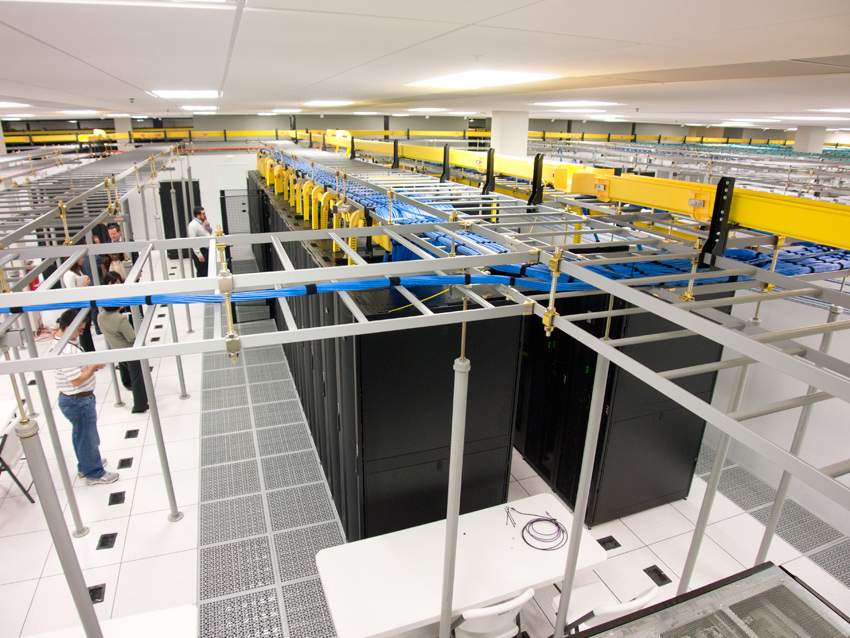6 Reasons to Specify Air-Sealing Grommets in Data Center Design
 Using raised-floor grommets to prevent bypass air from escaping the underfloor plenum is a well-known airflow management (AFM) best practice. Eliminating bypass airflow improves the cooling capacity and efficiency of any data center. Despite this, best practices are often not followed. Grommets are not installed for long periods after operation begins, and usually not until there's a desire to increase capacity or reduce operating costs. Designing and specifying grommets during initial data center construction or expansion helps to ensure the facility performs as intended from the moment it goes live. This way, PUE goals are met and operating costs are minimized.
Using raised-floor grommets to prevent bypass air from escaping the underfloor plenum is a well-known airflow management (AFM) best practice. Eliminating bypass airflow improves the cooling capacity and efficiency of any data center. Despite this, best practices are often not followed. Grommets are not installed for long periods after operation begins, and usually not until there's a desire to increase capacity or reduce operating costs. Designing and specifying grommets during initial data center construction or expansion helps to ensure the facility performs as intended from the moment it goes live. This way, PUE goals are met and operating costs are minimized.
Best-Practice Design Techniques Improve Cooling Capacity & Efficiency
Bypass airflow can have a significant impact on data center cooling capacity and efficiency. Minimizing bypass air loss from the raised floor plenum is one key part of best practice design for raised floor data centers. Common practices to reduce bypass air include using containment systems, blanking panels, directional air delivery, variable-air-volume controls, and air-sealing grommets for any floor penetrations.
Using floor grommets to stop bypass air from the underfloor plenum has become a well-known strategy. However, they are not typically installed during data center construction, and as a result, often never get installed.
Detailing and specifying grommets in the architectural design documents to ensure installation during initial data center construction has several key advantages:
1.Ensures cooling capacity is not compromised from the beginning. Specifying the type and performance of air-sealing grommets in the design documents for a new facility, or raised floor expansion, can ensure that the data center cooling capacity will not be compromised by using inferior sealing techniques.
2.Ensures grommets are always in the right place under the rack. Using a standard rectangular shape cutout located 4" from the edge and centered on the panel will enable equipment and racks to be easily deployed and upgraded later without needing to replace panels.
3.Saves time and eliminates mess. When specified as a factory cut-out, both the time and mess associated with field cutting is eliminated.
4.Improves efficiency and capacity. Data center efficiency, capacity, and cooling performance will not be compromised from the beginning.
5.Installs safely during construction and relocates easily in the future. Tate / Upsite Technologies grommets have a domed lid that keeps equipment from being rolled over, so that sealing cutouts during the initial build is easy and cost effective. Furthermore, since the standard location works with any size rack, the factory cut panels and grommets can be stored in reserve at your facility for future moves, adds, or changes.
6.Protects cables and wire passing through the floor as equipment is deployed. Installed grommets completely cover the cut edge of a panel to ensure wires are protected during installation, as well as any future deployments and changes to IT equipment.
Right from the start…
Installing air-sealing grommets during initial raised-floor installation in a data center is a best practice technique that will ensure the efficiency, capacity, and reliability of the facility.
• As a designer, by specifying and detailing air-sealing grommets at construction, you are protecting the integrity of the raised floor plenum and the airflow through the space.
• As a facility manager, from a cost and time management perspective, you will be able to speed up deployment of equipment without having to remove panels for cutting.
• As a technician, over the life of the building, you will be able to add and move new equipment without the worry of snagging cables or affecting AFM within the space.